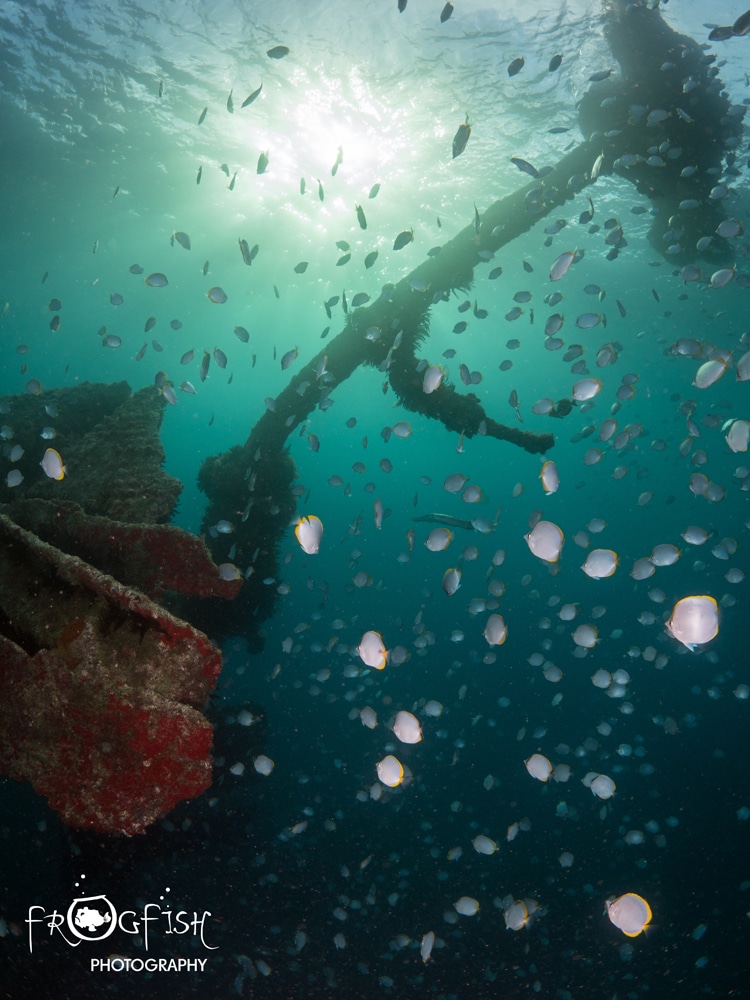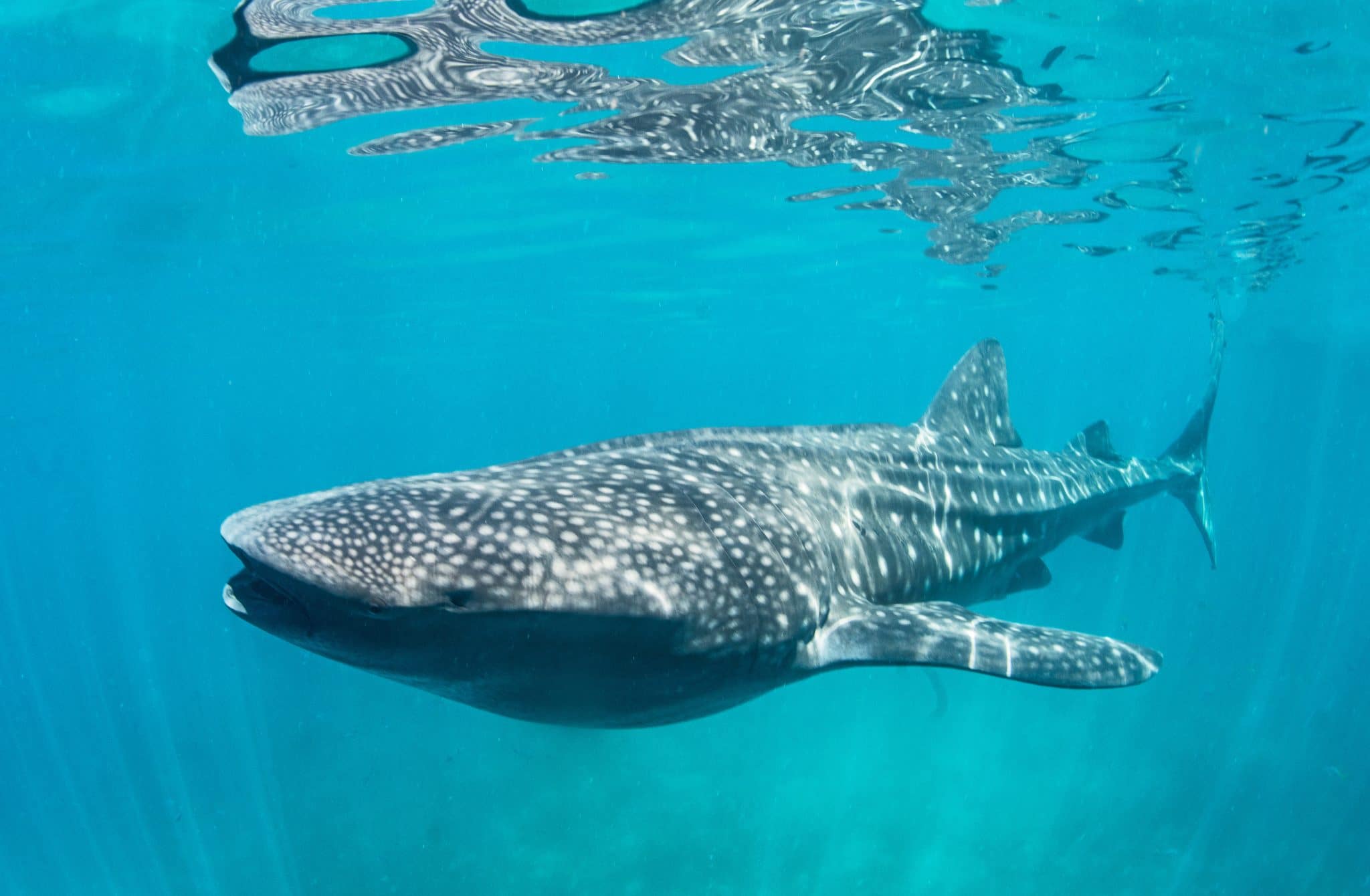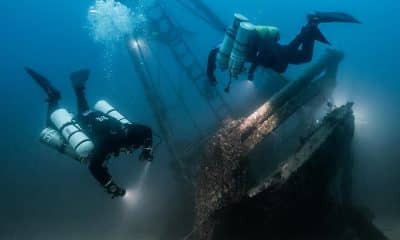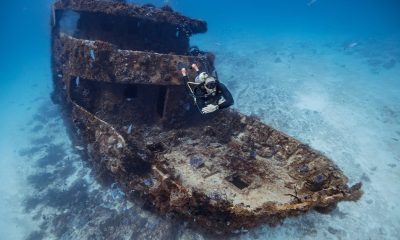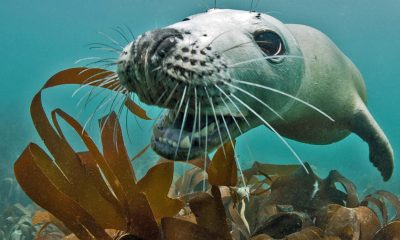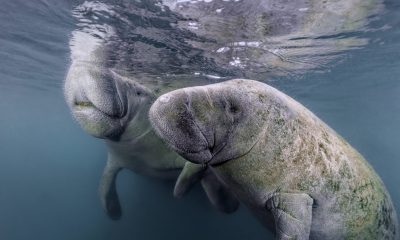Marine Life & Conservation
St Helena Recognised as an International marine Hope Spot
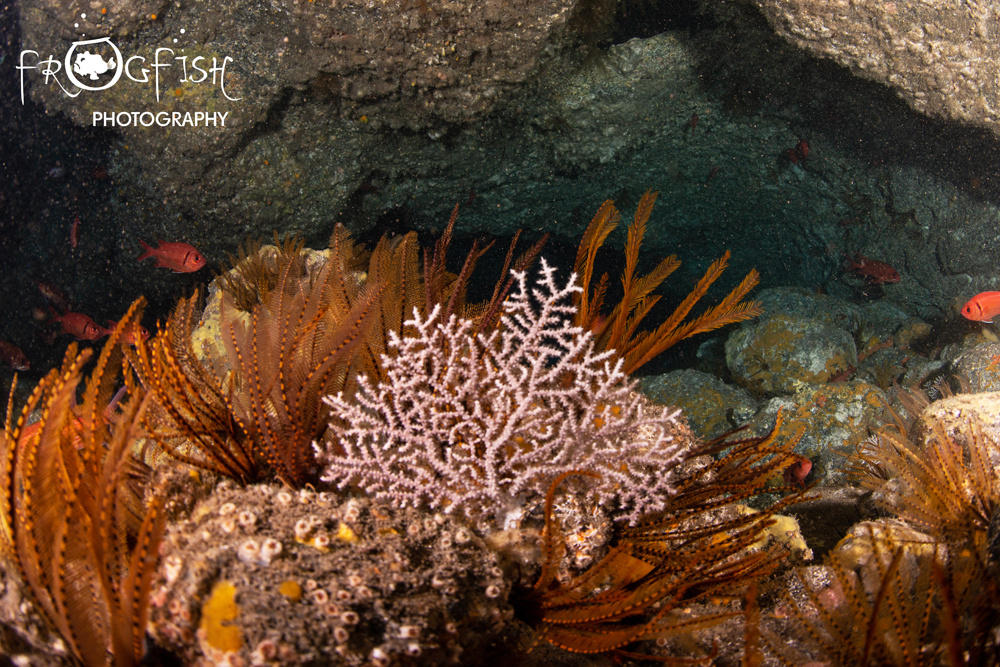
International marine conservation organisation Mission Blue officially recognised St Helena’s Marine Protected Area as a Hope Spot. Hope Spots are recognised as special places, being one of a kind areas of ocean that are scientifically identified for their uniqueness, and most importantly their community’s contribution and efforts in maintaining or improving global ocean health.
St Helena was nominated as a Hope Spot by two champions, the Director of the St Helena National Trust Helena Bennett and Director of Global Policy at Georgia Aquarium Dr Dayne Buddo. This nomination was supported by St Helena Government.
St Helena is honoured that Mission Blue has assessed St Helena’s efforts to safeguard our ocean and recognised us as a Hope Spot.
It also means that St Helena joins an ocean network of 156 Hope Spots around the world. These cover a combined near 60,000,000km2 of ocean, stretching from the Antarctica to the Arctic, and includes our sister island of Ascension.
This recognition follows a significant 20 year journey for St Helena in understanding and protecting the Island’s marine environment. It began with projects initially assessing whales, dolphins and birds, as well as undertaking basic fisheries science to build a baseline of knowledge and understanding. In 2012 St Helena Government started to consider a potential Marine Protected Area (MPA) designation. Between 2012 and 2016 various scientific programs were undertaken in collaboration with Island users and stakeholders, considering the social impacts of designation.
This ultimately led to 100% of St Helena’s near 450,000km2 Exclusive Economic Zone (EEZ) being designated as an IUCN Category VI sustainable use MPA in 2016, along with the publication of the Island’s first Marine Management Plan.
By comparison, only 8% of the world’s oceans are currently designated as MPAs, with under 3% being highly protected. This is set amid a backdrop where are our oceans have never been more at threat, from challenges including the impacts of climate change, ocean acidification, pollution and illegal fishing.
Following designation of the MPA, significant work has been ongoing to improve the understanding of the territory’s marine environment. This has been made possible by working closely with a variety of external partners and funders, such as the UK Government Darwin Initiative, the Blue Marine Foundation, the International Pole and Line Foundation and Georgia Aquarium.
Since 2016, St Helena has been fortunate to be a part of the UK Government’s Blue Belt Programme, which supports the Overseas Territories with the protection and sustainable management of their marine estates. The programme has provided significant funding and capacity to St Helena. This has catapulted St Helena’s science and research, in turn providing the evidence that underpins the MPAs management measures and the newly implemented 2023 Marine Management Plan.
In 2018, the St Helena National Trust with support from the Blue Marine Foundation, extended its advocacy of the Island’s natural heritage to include marine based conservation, education and outreach. The trust continues conservation monitoring of key marine species such as whale sharks and seabirds, promoting sustainable fisheries and the reduction of plastics and marine debris, contributing further evidence to underpin the Marine Management Plan.
This work, combined with St Helena’s distinctive features, has now been assessed by a reputable internationally recognised organisation who are to call St Helena a Hope Spot.
Many MPAs are designated in an effort to restore that area to a functional and thriving condition as a result of previous damage. St Helena’s marine environment remains in near pristine condition, and the community of St Helena is rightly proud to keep watch over an area that provides inspiration to others.
St Helena’s unique characteristics, most notably its remoteness and historic limited human pressures, has not only created unique habitats but also distinct assemblages of species. St Helena’s MPA attracts highly migratory and globally significant animals such as tuna, whale sharks and humpback whales.
St Helena has undertaken every reasonable effort within its control to ensure marine uses limit human pressure in order to deliver sustainability, even as marine tourism becomes more popular in reflection of St Helena’s amazing natural environment. For example:
- One by one fishing practices are permitted for certain key species, and unselective fishing methods are prohibited.
- Total allowable catch limits and size limits are in place.
- Robust wildlife and habitat interaction rules have been put in place, balancing the education and enjoyment of marine users against the need to safeguard our habitats and species for the future.
Dr Sylvia Earle, founder of Mission Blue, said:
“This marine protected area and new hope spot of nearly half a million square miles now faces pressures largely outside its control from rapidly changing climate, invasive species and pollution. By becoming a Hope Spot, St Helena can act as a beacon to the rest of the world. Although geographically isolated, it is deeply ecologically connected to many distant realms, and indeed, other Hope Spots.”
Director of St Helena National Trust, Helena Bennett, said:
“The ocean has a way of enchanting us, capturing our imagination and intriguing us with mysteries of the unexplored. Our Island and its surrounding waters are steeped in our culture and traditions, and have played a massive role in our history’s timeline since our island’s discovery in 1502, evolving our way with a sense of nostalgia and a feeling of belonging and home.”
UK Foreign, Commonwealth and Development Office Minister David Rutley said:
“St Helena is home to a range of unique marine species and habitats creating breath-taking coastal and underwater sceneries. I’m proud to see St Helena’s MPA designated as a ‘hope spot’, this speaks to the fantastic working collaborations St Helena has with its local community, Government and NGOs in creating ocean conservation consciousness through sustainable use.”
“The UK’s landmark Blue Belt Programme has also enabled positive lasting change for the island, through its facilitation of a range of support covering innovative science initiatives such as, the deployment of a network of underwater cameras to help observe and quantify ocean wildlife, a purpose-built marine laboratory to ensure evidence-based management of habitats and species is undertaken supported by a robust policy, legislation, education and enforcement. An exemplar of creating positive change for the protection of the marine environment for the rest of the world”.
Minister for Environment, Natural Resources and Planning, Christine Scipio, said:
“As a community we are rightly proud of our unique marine environment, which is reflected in how we approach our stewardship of it. We’ve spent the last 20 years developing our knowledge of our special waters and ensuring we only permit the most sustainable of practices within our MPA. We’re delighted that Mission Blue has recognised St Helena as a Hope Spot, and hope that we can act as an example to the rest of the world of what can be achieved despite your size and limited resources.”
Graham Sim, former Fisheries Officer and long term advocate for St Helena’s marine environment, said:
“The thing about it is, and I don’t know why, there is something about the ocean that I have always been attracted to. St Helena is in a unique position and has come a long way with the conservation and protection of the marine environment, with the local younger generations being much more aware of the need to protect the ocean, giving us all hope for the future. But, there is a lot that still needs to be done here, and elsewhere, and we need to keep focused on what is required to protect our beloved oceans.”
More information about the Hope Spot network can be found online at www.missionblue.org/hope-spots.
Blogs
Heading out on the water this Summer? Watch for manatees
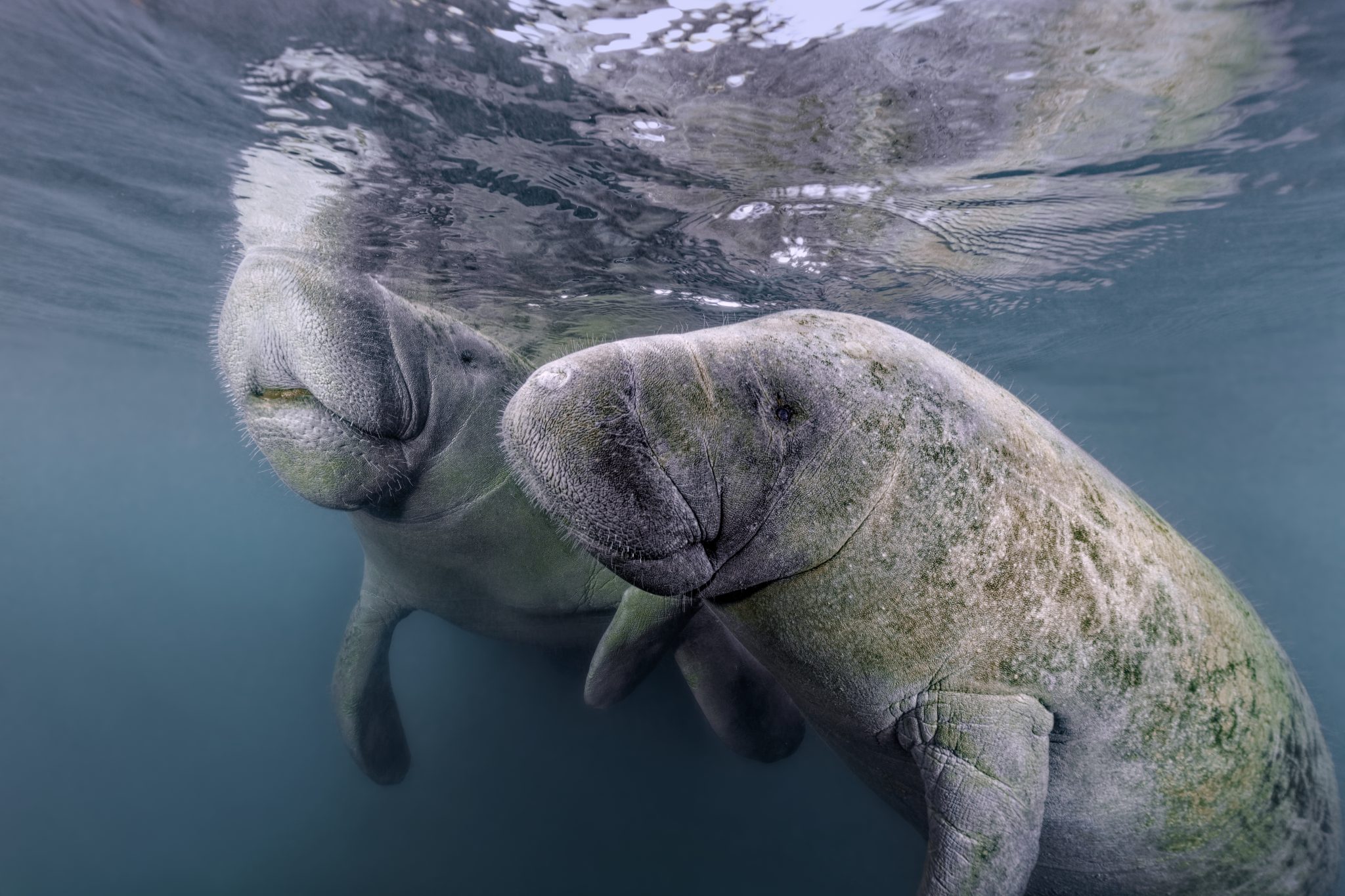
As National Safe Boating Week approaches, Save the Manatee® Club is urging boaters, and anyone that enjoys Florida’s waterways, to respect and protect the defenseless manatees that inhabit our shared waterways. From May 18 to 24, leading up to Memorial Day Weekend, the campaign aims to raise awareness about recreational boating safety and the importance of safeguarding imperiled manatees during the summer boating season. This week also emphasizes the importance of encouraging boaters to enroll in a boating safety course.
Manatees are semi-migratory marine mammals that are commonly found in shallow estuaries, bays, rivers, canals, and coastal areas throughout Florida and neighboring states. With some manatees venturing as far west as Texas and as far north as Massachusetts, collisions between these gentle giants and watercraft have become distressingly frequent. Boat propellers and high-speed collisions pose significant threats to manatees, often resulting in severe injuries or even death.
Save the Manatee Club is calling on all water enthusiasts to follow essential manatee safety tips to ensure the well-being of the imperiled manatee:
- Obey Speed Zone Signs: Familiarize yourself with and adhere to posted speed limits to prevent collisions with manatees.
- Reduce Glare with Polarized Sunglasses: Wear polarized sunglasses to enhance visibility and spot manatees below the water’s surface.
- Recognize Manatee Signs: Learn to identify signs of manatees in the area, such as swirls or flat spots on the water caused by their movements.
- Respect Manatee Sanctuaries: Keep a safe distance from posted manatee sanctuaries and avoid pursuing or harassing these marine mammals, as it is illegal and can disrupt their natural behaviors.
- Report Distressed Manatees: In Florida, promptly report distressed, injured, tagged, or orphaned manatees to the Florida Fish and Wildlife Conservation Commission (FWC) at 1-888-404-FWCC (3922). Outside of Florida, report sightings to the appropriate state agency or rescue organization. A list of agencies to contact is available at savethemanatee.org/report.
- Protect Seagrass Beds: Avoid boating over seagrass beds and shallow areas where manatees may be feeding. Stick to deep water channels while remaining vigilant, as manatees also utilize these channels during their travels.
- Dispose of Fishing Line Responsibly: Anglers should properly dispose of or recycle used fishing line to prevent entanglement hazards for manatees.
“Each year, National Safe Boating Week provides an excellent reminder for all of us to be aware that we share our waterways with vulnerable manatees,” emphasized Patrick Rose, Aquatic Biologist and Executive Director of Save the Manatee Club. “With the recent Unusual Mortality Event on Florida’s East Coast claiming an alarming number of manatees’ lives, it is more crucial than ever to prevent preventable deaths caused by watercraft collisions. By following manatee-safe boating guidelines, such as obeying speed zones and remaining vigilant for manatees, everyone on the water can contribute to the protection of these gentle giants.”
Save the Manatee Club offers a range of free materials to help safeguard manatees and raise awareness about manatee-safe boating practices. Shoreline property owners and park or marina managers can order aluminum dock signs to alert others about the presence of manatees in their areas. Boaters and paddlers can request packets containing a safety tips card, a waterproof boat banner, and a decal to display on their vessels, providing the number to report manatees in distress. To view and request these materials, visit savethemanatee.org/resources. Save the Manatee Club will also be hosting a live webinar for National Safe Boating Week on Tuesday, May 21st at 6pm EST. To register, visit savethemanatee.org/register.
Blogs
The Ocean Cleanup Breaks 10,000,000 KG Barrier

The Ocean Cleanup, the global non-profit project, has removed a verified all-time total of ten million kilograms (22 million lbs.) of trash from oceans and rivers around the world – approximately the same weight as the Eiffel Tower.
To complete its mission of ridding the oceans of plastic, The Ocean Cleanup uses a dual strategy: cleaning up the Great Pacific Garbage Patch (GPGP) to remove the plastic already afloat in the oceans, while stopping the flow of plastic from the world’s most polluting rivers.
Through cleaning operations in the GPGP and in rivers in eight countries, the cumulative total of trash removed has now surpassed ten million kilograms. This milestone demonstrates the acceleration of The Ocean Cleanup’s impact, while underlining the astonishing scale of the plastic pollution problem and the need for continued support and action.
While encouraging for the mission, this milestone is only a staging point: millions more tons of plastic still pollute our oceans and The Ocean Cleanup intends to continue learning, improving and innovating to solve this global catastrophe.
This announcement comes as governments from around the world meet to continue negotiations to develop a new legally binding instrument to end plastic pollution at INC4 in Ottawa, Canada. Representatives of The Ocean Cleanup will be in attendance and the organization will be urging decision-makers to collaborate towards a comprehensive and ambitious global treaty which addresses plastic at all stages of its life cycle and in all marine environments worldwide, including in areas beyond national jurisdiction.
It is encouraging to see that the need for remediation is reflected in the various options for potential treaty provisions. It is essential that the final treaty contains clear targets for the remediation of legacy plastic pollution, and reduction of riverine plastic emissions.
Tackling plastic pollution requires innovative and impactful solutions. The treaty should therefore incentivize the innovation ecosystem by fostering innovations that make maximal use of data, technology and scientific knowledge – such as those designed and deployed by The Ocean Cleanup.
‘After many tough years of trial and error, it’s amazing to see our work is starting to pay off – and I am proud of the team who has brought us to this point.’ said Boyan Slat, Founder and CEO of The Ocean Cleanup. ‘While we still have a long way to go, our recent successes fill us with renewed confidence that the oceans can be cleaned.’
The Ocean Cleanup was founded in 2013 and captured its first plastic in 2019, with the first confirmed catch in the GPGP coming soon after the deployment of Interceptor 001 in Jakarta, Indonesia. After surpassing one million kilograms of trash removed in early 2022, the non-profit project has since progressed to the third iteration of its GPGP cleaning solution, known as System 03, and a network of Interceptors currently covering rivers in eight countries, with more deployments set for 2024.
About The Ocean Cleanup
The Ocean Cleanup is an international non-profit organization that develops and scales technologies to rid the world’s oceans of plastic. They aim to achieve this goal through a dual strategy: stemming the inflow via rivers and cleaning up the legacy plastic that has already accumulated in the ocean. For the latter, The Ocean Cleanup develops large-scale systems to efficiently concentrate the plastic for periodic removal. This plastic is tracked and traced through DNV’s chain of custody model to certify claims of origin when recycling it into new products. To curb the tide via rivers, The Ocean Cleanup has developed Interceptor™ solutions to halt and extract riverine plastic before it reaches the ocean. Founded in 2013 by Boyan Slat, The Ocean Cleanup now employs a broadly multi-disciplined team of approximately 140. The foundation is headquartered in Rotterdam, the Netherlands.
For more information, visit: theoceancleanup.com and follow @theoceancleanup on social media.
-

 Gear Reviews1 month ago
Gear Reviews1 month agoGEAR REVIEW – Revolutionising Diving Comfort: The Sharkskin T2 Chillproof Suit
-

 Blogs3 weeks ago
Blogs3 weeks agoDive Indonesia Part 3: Dive into Lembeh Trip Report
-

 Blogs2 months ago
Blogs2 months agoMurex Resorts: Passport to Paradise!
-

 Blogs3 months ago
Blogs3 months agoDiver Discovering Whale Skeletons Beneath Ice Judged World’s Best Underwater Photograph
-

 News3 months ago
News3 months agoPADI Teams Up with Wellness Brand Neuro to Drive Ocean Change and Create a Blue State of Mind
-

 Marine Life & Conservation3 months ago
Marine Life & Conservation3 months agoSave the Manatee Club launches brand new webcams at Silver Springs State Park, Florida
-

 Blogs2 months ago
Blogs2 months agoSeagrass Awareness Month brings critical food source for Manatees to centre stage
-
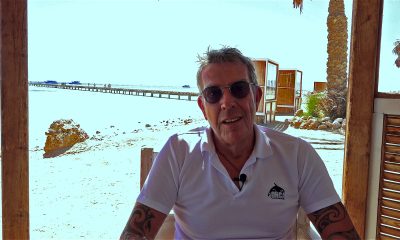
 Blogs2 months ago
Blogs2 months agoSOMABAY: Scubaverse interviews Wolfgang Clausen, General Manager, ORCA Dive Clubs


